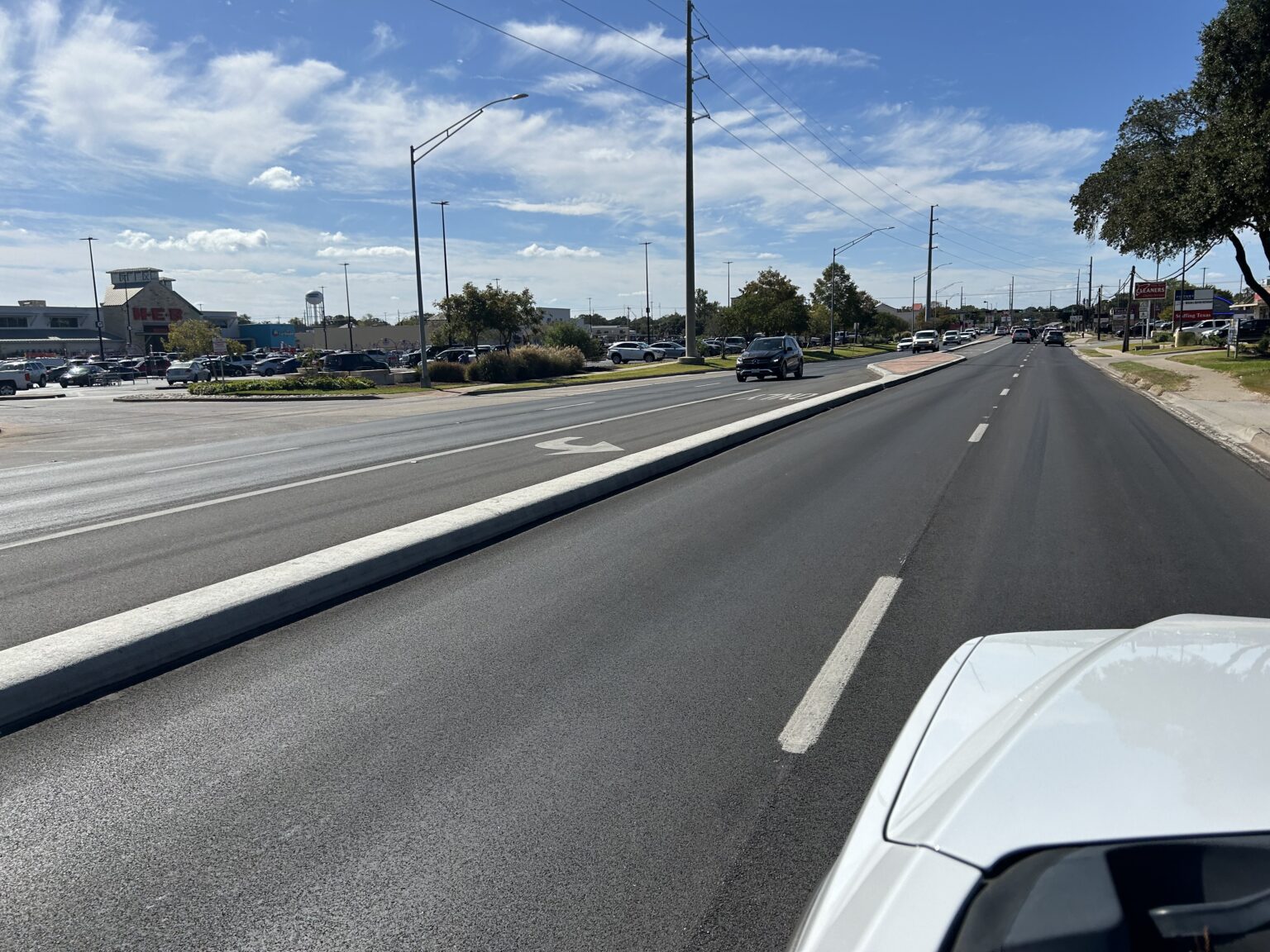Construction activity has significantly increased across Bryan/College Station, Texas, over the last few years as new medians are installed on our roadways. Unfortunately, not everyone welcomes these developments.
Many community members are concerned that the medians might cause more harm than good. Reports have surfaced about emergency vehicles experiencing slower response times due to the complex turnarounds required to cross the road. Some residents have also voiced concerns about small businesses being negatively affected by the placement of the medians.
This raises important questions – why is TxDot investing in these medians? Are they genuinely enhancing the safety of our community’s roads, or are they introducing new challenges? Let’s explore the effects of medians on busy roads and what this means for all of us.
TxDot’s Plan
TxDot reports that the last deathless day on Texas roadways was November 7, 2000. Over the past two decades, more than 75,000 Texans have lost their lives in traffic crashes, with an average of 10 people dying every day. Because of this, TxDot has created a plan to reduce crash fatalities by 50% by 2035 and eliminate crash-related deaths by 2050. Raised medians are a part of this plan.
Every year, TxDot meets to assess our roadway systems and find traffic areas that need to be improved. Through these assessments, it was determined that high-traffic areas in Bryan/College Station needed raised medians to prevent traffic from crossing busy roadways from side streets and local businesses.
These medians have been designed to separate turning vehicles from other traffic and prevent drivers from crossing the dividing lines into oncoming cars. With Bryan/College Station growing in population, TxDot hopes that these new additions will reduce collisions and improve pedestrian safety.
Median Statistics
Despite these intentions, residents have voiced their frustration, saying the medians are an inconvenience and putting our local businesses at risk of shutting down. Admittedly, these medians do make it more difficult to navigate our roads in a timely manner. Now, needing to turn left may mean traveling further down the road and making a U-turn to get to your destination. So, are medians worth it? Let’s look at the statistics.
The Transportation Research Board reports that studies across the United States have shown that raised medians do provide lower crash rates than roads without them. The U.S. Department of Transportation gathered data to show that, after adding raised medians throughout busy roadways, motor crashes were decreased in these areas by an average of 15%. Aside from reducing crashes, this data also showed that the capacity of roadways was increased, decreasing traffic delays by more than 30%.
The Federal Highway Administration also highlights the importance of raised medians for pedestrians. According to their research, raised medians provide safety islands for pedestrians, decreasing the amount of auto-pedestrian crashes in unmarked crosswalk locations by 39%. Along with providing a place of refuge for pedestrians, raised medians allow space for lamp post installations. Improved lighting in these areas has proven to reduce nighttime pedestrian fatalities by 78%.
So, while medians may cause everyday drivers frustration trying to get around Bryan/College Station, research shows they do improve safety for drivers and pedestrians. The next time you are frustrated by the flow of traffic forced by a median, just remember the few minutes added to your drive could be saving a life.










